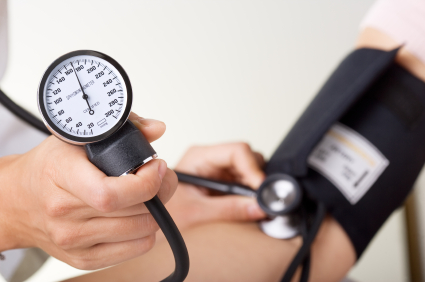
Do you know what your blood pressure reading is? Have you had your blood pressure checked in the last year? If you are a man over age 45 or a woman over age 55, especially if you are African-American, high blood pressure is a condition you can't ignore. According to the U.S. Centers for Disease Control and Prevention, more than half of all men and women will develop high blood pressure, also called hypertension, after age 55.
High blood pressure can lead to heart attack and stroke, two of the three leading causes of death for Americans. You can have high blood pressure without experiencing any symptoms — that's why it’s important to have your blood pressure checked regularly. And even if you know that you have a normal blood pressure reading today, you want to do everything you can to keep it in that healthy range.
Normal Blood Pressure Basics
Blood pressure is the force your blood exerts on the walls of your arteries, the blood vessels that carry oxygen-rich blood away from your heart. When your heart beats and forces more blood into your arteries, the force is a little higher; this is called your systolic pressure. Between beats, the pressure drops; this is called your diastolic pressure.
If your arteries become stiff or narrow, pressure builds up — think of it as squeezing a section of garden hose — and makes your heart work harder. Your heart is a muscle about the size of your fist that has to beat about two and a half billion times in an average lifetime, so you don't want to make it work any harder than necessary. That's why having normal blood pressure is so important.
What's Your Blood Pressure Reading?
To take a blood pressure reading, a healthcare provider will place a cuff around your arm and inflate it until the blood stops flowing. Then she will slowly deflate the cuff and listen to an artery in your arm, on the opposite side of your elbow. When she first hears blood flowing, which sounds like a heartbeat, she measures the systolic blood pressure. When she can't hear the beat anymore, she measures the diastolic blood pressure. The systolic pressure number is always recorded first. Here is what the numbers mean:
- Systolic pressure less than 120 and diastolic less than 80 means normal blood pressure.
- Systolic between 120 and 139 and diastolic between 80 and 89 means hypertension
- Systolic pressure over 139 and diastolic pressure over 89 may mean high blood pressure.
It's important to know that one abnormal blood pressure reading does not mean hypertension. Your healthcare provider will check your blood pressure reading several times on different days before deciding if you have high blood pressure.
Tips for Keeping Normal Blood Pressure
Getting older, being African-American, having diabetes, and having a family history of diabetes are some of the factors that increase your risk for high blood pressure, but you can fight back. Here's how:
- Exercise. One reason exercise is so effective at controlling blood pressure is because it stimulates your body to release a substance called nitritei acid. Nitrite acid causes blood vessels to open up, which reduces blood pressure. Exercise also helps to strengthen your heart muscle, reduce stress, and aid weight loss.
- Lose excess weight. There's no getting around the fact that blood pressure goes up as the pounds pile on. Being overweight increases your risk for heart disease and diabetes, too. Losing even 10 pounds can start to make your blood pressure go back down.
- Eat healthily. Eating the right type of diet can lower your risk for high blood pressure or help you return to normal blood pressure. Clinical studies show that a diet high in fruits, vegetables, low-fat dairy, whole grains, poultry, fish, and nuts really works. You also need to avoid fats, red meat, and excess sugar.
- Shake the salt habit. Your body only needs about 500 milligrams of salt a day, but if you are like the average American you may be consuming up to 9,000 mg a day. Studies show that high salt leads to high blood pressure. Current recommendations are to limit salt intake to 2,400 mg per day, the equivalent of about one teaspoon.

- Put the brakes on smoking and drinking. These are two other bad habits to avoid if you want to keep a normal blood pressure. Alcohol raises blood pressure and adds empty calories. A safe amount of alcohol is only one drink a day for women and two for men. Smoking is not safe in any amount. Nicotine causes blood vessels to constrict and that raises blood pressure. Quitting will also lower your risk of cancer and heart disease.
The only way to know if you have high blood pressure or normal blood pressure is to have a blood pressure reading done by a trained healthcare provider. The American Heart Association recommends a blood pressure reading at least once every two years. If you have had a recent blood pressure reading and you have normal blood pressure, don't take it for granted. Remember hypertension is a common and sometimes silent killer. Push yourself away from the computer, turn off the television, get active, eat your fruits and vegetables, and kick any bad habits.











0 comments:
Post a Comment